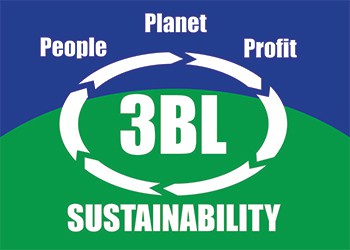As human beings, we find it hard to understand that our actions have consequences.

The energy we use daily has a significant economic, health, societal, and environmental impact. There are a few individuals who know the economic benefits of using renewable sources of energy. However, the majority are still stuck on using other non-renewable sources of energy.
The greatest threat to the use of solar power systems is the widespread use of fossil energy. Fossil energy includes natural gas, crude oil, and coal. Many people prefer using fossil fuel due to its availability and the fact that they can afford it. The pros of solar energy are unknown to most people. The governments are however putting in place efforts and incentives to promote the use of clean energy.
1. Government, Credit And Solar Tax Incentives
The governments all over the world are trying to promote the use of renewable energy.

Good examples are the United States and the European nations. One way the U.S does that is by implementing tax incentives to promote the use of clean energy. You are likely to get credit and tax deductions on the purchase of a home solar power systems.
The adoption of solar energy may save you up to 30% of the cost you incur. One of the pros of solar energy is that you get incentives such as cash rebates. Cash rebates can end up reducing your cost up to 10 or 20%. The tax deductions and credits have an economic benefit to the people who take advantage of them.
The European nations use a strategy called the Feed-In-Tariff scheme. All users of renewable sources of energy both commercial and residential collect money from the government. The incentives apply to all sources of renewable energy such as wind, geothermal, and solar. The incentives have helped the government to boost the solar industry.
2. Triple Bottom Line

The triple bottom line concept is a new concept in the market today that offers substantial economic benefits. The idea emphasizes the need for utility companies to remain economically viable. However, the economic viability is as a result of staying environmentally and socially sustainable and responsible. Apart from gaining huge profits, the utility companies go further to consider the aspect of people and the planet.
Big companies such as Google, Apple, Walmart, and Amazon have taken the initiative to adopt the triple benefit concept. They are using wind energy to power their operations. By doing so, they are reducing the carbon footprint and greenhouse effects.
3. Job Creation
According to research, renewable sources of energy are more labor intensive than other sources. That means that the solar industry requires a larger workforce compared to fossil fuel. Job creation is the most significant economic advantage of using renewable sources of energy.

Currently, there is a need for professionals to work in the renewable energy industry. Solar PV installers and wind power technicians are in high demand. The demand creates jobs as there is a need to train and educate the people required to work in the industry.
There has been a tremendous expansion in the overall workforce by about 168% for the last seven years in the U.S. globally. Over 10 million people have been employed in the renewable energy industry. 1.5 million Jobs account for the hydroelectric energy, 1.2 million for the wind energy, and 3 million for the solar energy jobs.
The U. S Department of Energy predicts that by 2050, there will be an even higher demand for jobs in the solar industry. The Wind Vision Report estimates that the industry requires over 600, 000 people in workforce to work in all the departments. The department includes wind power installation, maintenance, manufacturing, and support.
Let’s not forget the multiplier effect brought about the creation of jobs. The use of renewable energy boosted the global economy by $ 1.4 trillion in 2016. The United States reported $ 200 billion from the global economic boost. The establishment of renewable energy plants also contributes to the local economies. For example, the wind farms established in Illinois brought about the creation of 19, 000 jobs. The jobs created boosted the economy of the local state of Illinois by $ 6 billion.
4. Solar power use and Widespread Adoption
In the recent past, only the rich could afford to install renewable energy.

However, due to the government incentives, all people have access to the use of solar energy. Solar cells have become the cheapest source of energy for many people. The solar cells make use of the heat from the sun to generate power. The installation enables most households to reduce their electricity bills. Commercial entities have also taken advantage of solar energy to reduce their electricity bills and increase profitability.
Many nations including Europe, the U.S, India, and China are taking the initiative to invest in renewable sources of energy. The efforts are in the bid to reduce air pollution and preserve the environment. Experts estimate an increase in the use of solar cells by 5% globally by 2030 and 16% by 2050.
Not only is the commercial industry adopting the use of photovoltaic cells but also residential homes. Even though the initial investment in the installation is costly, long term use of solar power has an economic benefit. You can take advantage of the deductions and tax incentives to reduce the cost of installation. Banks and financial agencies are now offering financing and credit to the people who wish to install solar energy. Governments especially the local government are also funding the installation process for some of their residents.
5. Climate Change
Climate change is an economic advantage that most people do not realize.

However, the cost that we incur when dealing with the consequences of climatic changes is costly. The main reason why we don’t think taking care of the environment is profitable is because it affects us indirectly. No one will think to realize that the hurricanes, the tornadoes, and the wildfire happening arise from climatic changes.
The costs the governments incur in recovering from the calamities is astonishing. For example, hurricanes account for $ 125 billion. The California wildfire alone cost the United States $ 9 billion. According to the Harvard Business Review, the number will rise to $ 2.2 trillion by 2025.
The cost of switching to the use of renewable sources of energy is far much less than what we incur in managing a catastrophe. The cost of controlling Ebola disease which is as a result of the destruction of natural habitats is also high. It is not only the financial burden, but the psychological, and societal impact.
6. Fossil Fuel
The use of fossil fuel has a substantial adverse economic impact on the environment.

We may not see it directly, but it reflects on the costs we incur in treating illnesses related to air pollution. According to research, in 100 years, fossil energy may start depleting. The irony is that the demand and use of fossil fuel are on the rise. Fossil fuel accounts for 80% of the energy used by people while renewable energy accounts for 10%. As of 2012, the consumption of fossil fuel rose by 30% globally.
Burning fossil fuel leads to gas emissions such as anthropogenic carbon dioxide on the earth surface. The accumulation of carbon dioxide on the earth surface due to gas emissions leads to an increase in carbon footprint and the greenhouse effect. We see the greenhouse effect on the climatic changes happening across the globe. We have experienced ice melting on the Arctic, global warming, and rising sea levels.
